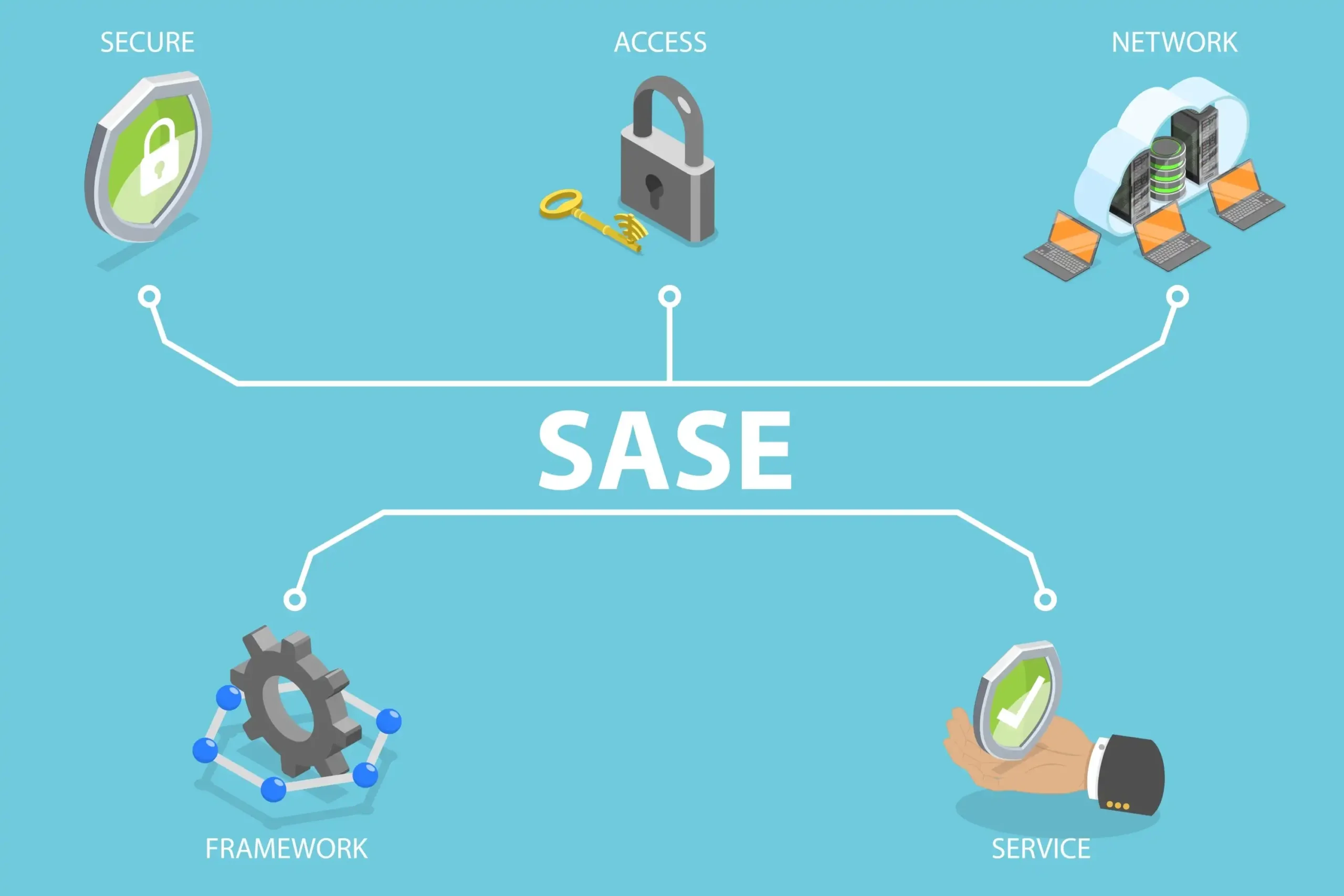What is SASE? An Innovative Solution to Networking and Security


The modern enterprise looks nothing like it did a decade ago. Employees aren’t all tucked inside an office behind the corporate firewall anymore. They’re scattered across cities, countries, and even time zones. Applications don’t live neatly in data centers; they’re floating in the cloud, spread across SaaS platforms, private clouds, and hybrid environments. And if you’re thinking, “That sounds like chaos waiting to happen,” you’re not wrong. This is where SASE steps in.
So, what is SASE anyway?
SASE (pronounced “sassy”) refers to Secure Access Service Edge (SASE). Gartner named it back in 2019, and although it seemed to be just another buzzword at the time, the concept has rapidly developed into a need.
At its essence, SASE brings together two worlds: networking and security. Rather than operating them independently—networking teams operating their side and security teams scrambling on their side—SASE combines them into a single cloud-delivered system. Visualize swapping the VPN-patchwork, firewall-proxy-gateway mess for a single, unified model that tracks with your users wherever they roam.
It’s not only consolidation. It’s about transforming how businesses manage connectivity in an ageless, cloud-first world.
Why the Old Model Falls Short
Let’s go back in time. Legacy security was all about the castle-and-moat concept: construct good walls (firewalls, perimeter security), and all inside is secure. That was good enough when most staff worked within offices and applications remained on servers within the same buildings.
But these days? Workers log in from airports, coffee shops, and living rooms. Information resides in AWS, Google Cloud, Microsoft 365, Salesforce, and several other locations. The perimeter is nonexistent. Castle walls have fallen. Attempting to stretch a VPN around this chaos is trying to lasso the wind—it’s clumsy, inefficient, and downright hazardous.
The SASE Philosophy
SASE counsels: forget about location thinking, think about identity. Who is the user? What device are they on? Where are they accessing from? What’s the sensitivity of the app they’re attempting to access?
Access is no longer about being “inside” or “outside.” It’s about always-verified, context-based, least-privilege access.
In a nutshell, SASE treats every connection as if it could be malicious—until it has been established as safe. That might sound paranoid, but in cybersec, paranoia is just another name for survival.
The Core Elements of SASE
To understand SASE, split it into two halves: networking and security services, all accessed through the cloud.
Networking Layer
SD-WAN (Software-Defined Wide Area Network): It’s the backbone. It provides rapid, secure connections between distributed sites, clouds, and users.
- Optimized Routing: Data is not bouncing inefficiently through far-flung corporate hubs. It follows the most intelligent route it can find.
- Security Layer
- Zero Trust Network Access (ZTNA): Pfft, VPNs are so last century. ZTNA grants users access to precisely the apps or services they require—nothing more.
- Cloud Secure Web Gateway (SWG): Shields users against harmful websites or risky downloads, even when remote from the office.
- Cloud Firewall (FWaaS): Enterprise-class firewall security is served up from the cloud and is growing as simply as your staff does.
- CASB (Cloud Access Security Broker): Maintains cloud use in sight and under management, blocking unauthorized applications from infiltrating processes.
- Data Loss Prevention (DLP): Prevents sensitive information from leaking out, either via email, uploads, or outright theft.
All these capabilities, previously spread out across appliances, vendors, and silos, are consolidated in one cloud-native solution.
Why Does SASE Matter Now?
Because the world has evolved. Security teams are drowning in complexity, juggling dozens of tools that don’t communicate with each other. Employees want seamless connectivity, not cumbersome VPN logins that get them late to meetings. Attackers are more cunning than ever, probing vulnerabilities created by managed secure-edge cloud services and cloud sprawl.
SASE doesn’t merely address one of these challenges—it addresses all of them by offering:
- Unified visibility across users, devices, and applications.
- Consistent policy enforcement, no matter where someone connects from.
- Scalability, because cloud delivery grows with your business.
- Improved performance, since connections take the shortest path instead of being routed through corporate bottlenecks.
Making It Personal: What Does SASE Feel Like?
Suppose you’re a worker logging in from a coffee shop in London. Rather than booting up a VPN, experiencing lag, and then being denied access to the app you want to use because IT neglected to whitelist your IP, the process is transparent. You’re authenticated once—yourself, your device, and your context are confirmed. You’re immediately given access to what you’re permitted to see.
Now switch gears. You are the IT administrator. Rather than having ten disparate dashboards to manage, you have your finger on the pulse of everything. Who accessed what from where, who accessed what data, did anything look amiss—it’s all yours at your fingertips. And when your firm adds 500 new staff members in three new countries, you don’t have to scramble to get hardware. You grow instantly, in the cloud.
That’s what SASE feels like. Easier to use, saner for IT, safer for all.
Is SASE Just Hype?
A good question. The tech industry loves hype, after all. But SASE has legs because it reacts to actual, fundamental changes in our work. Remote work isn’t disappearing. Cloud adoption isn’t slowing. Threats aren’t diminishing.
Firms heedless of this trend can stick to traditional tools for a bit longer, but sooner or later, the seams reveal outages, breaches, unhappy employees, and skyrocketing costs. SASE is not hype—it’s the natural evolution of networking and security.
Getting Started With SAS
You don’t just flip a switch and become “SASE-enabled.” It’s a process. Begin with where there’s the most friction—perhaps swapping out VPN for ZTNA, or deploying cloud SWG to remote workers. From there, layer on SD-WAN, CASB, and DLP as your requirements expand.
The most important thing is alignment. Security and networking teams need to work together, since their jobs dovetail more than ever before in a SASE world. Culture transformation can be as significant as tech adoption.
The Bigger Picture
SASE is not merely a technology upgrade. It’s an acknowledgment that the edges of work, what employees expect, and the methods of attackers have all changed. Enterprises require a model that can keep pace, adapt to change, and provide protection without making everyday work cumbersome.
So, what is Secure Access Service Edge (SASE)? It’s the mortar that unites contemporary networking and security. It’s the navigation system that helps enterprises navigate a world without borders. And for companies that want to expand without being hampered by legacy infrastructure, Neeve.ai is the future.




